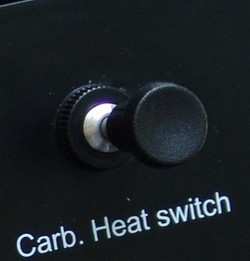Aero-Tips!
A good pilot is always learning -- how many times have you heard
this old standard throughout your flying career? There is no truer
statement in all of flying (well, with the possible exception of
"there are no old, bold pilots.") It's part of what makes aviation
so exciting for all of us... just when you think you've seen it
all, along comes a scenario you've never imagined.

Aero-News has called upon the expertise of Thomas P. Turner,
master CFI and all-around-good-guy, to bring our readers -- and us
-- daily tips to improve our skills as aviators, and as
representatives of the flying community. Some of them, you may have
heard before... but for each of us, there will also be something we
might never have considered before, or something that didn't
"stick" the way it should have the first time we memorized it for
the practical test.
It is our unabashed goal that "Aero-Tips" will help our readers
become better, safer pilots -- as well as introducing our
ground-bound readers to the concepts and principles that keep those
strange aluminum-and-composite contraptions in the air... and allow
them to soar magnificently through it.
Look for our daily Aero-Tips segments, coming each day to you
through the Aero-News Network. Suggestions for future Aero-Tips are
always welcome, as are additions or discussion of each day's tips.
Remember... when it comes to being good pilots, we're all in this
together.
Aero-Tips 01.10.06
 You learned it by rote—pull
the carb heat knob and note an rpm loss as part of your Before
Takeoff check, and when reducing power below about 1500 rpm for
landing. If anybody asks (not likely since your last
checkride or flight review) you mutter something about
“venturi effect” and “carburetor
ice.” But do you really understand why we need carb
heat and how to properly use it?
You learned it by rote—pull
the carb heat knob and note an rpm loss as part of your Before
Takeoff check, and when reducing power below about 1500 rpm for
landing. If anybody asks (not likely since your last
checkride or flight review) you mutter something about
“venturi effect” and “carburetor
ice.” But do you really understand why we need carb
heat and how to properly use it?
The big chill
The venturi-shaped internal design of carburetors cools air as
much as 40° Fahrenheit. This means moist air as warm as
70°F can freeze in the carburetor, strangling
combustion.
Use carb heat:
- At the first sign of power loss -- if too much ice forms or
engine exhaust cools too much, carb heat might not melt out all the
ice.
- When humidity exceeds about 80% and/or there’s a three
degree or smaller temperature/dew point spread.
- When operating at low power settings, especially during
extended glides.
- Any time recommended by the aircraft or engine
manufacturer.
(Note: After applying carb heat you may be able to get the
engine to run more smoothly by leaning the mixture slightly.
The object is to adjust fuel flow to compensate for the reduced
oxygen density of carb-heat combustion air).
All or nothing?
If flying with a carburetor temperature gauge, you can apply
just enough carb heat to get the temperature out of the freezing
range, minimizing power loss. Without such instrumentation
the conventional wisdom is to apply full carb heat whenever carb
ice is likely, accepting the power loss that results.
Aero-Tip of the day: Know the
conditions requiring carb heat; use it how and when needed.
 ANN's Daily Aero-Linx (05.02.24)
ANN's Daily Aero-Linx (05.02.24) ANN's Daily Aero-Term (05.02.24): Touchdown Zone Lighting
ANN's Daily Aero-Term (05.02.24): Touchdown Zone Lighting Aero-News: Quote of the Day (05.02.24)
Aero-News: Quote of the Day (05.02.24) ANN FAQ: Contributing To Aero-TV
ANN FAQ: Contributing To Aero-TV NTSB Final Report: Cirrus Design Corp SR20
NTSB Final Report: Cirrus Design Corp SR20




